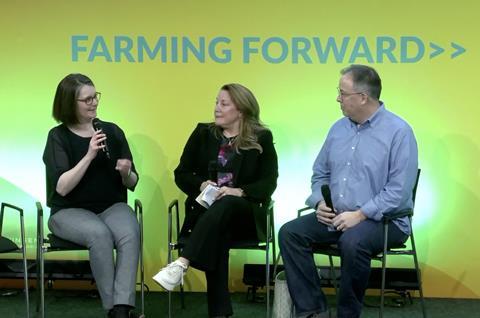Organised by the Controlled Environment Agriculture Alliance, the Forward Farming session looked at how indoor agriculture makes its way to market

A series of workshops at Fruit Logistica, organised by the Controlled Environment Agriculture Alliance, offered insights into what is a rapidly growing sector of the fresh produce industry.
This session, which took place on the Farming Forward stage during the opening day of Fruit Logistica, focused on how those in controlled environment agriculture could ultimately become successful, profitable organisations.
Marc Oshima, CEO at Oshima Good Food, began the session by highlighting how many different parts of the business came together to help those in the controlled environment agriculture get to market.
He pointed out that ultimately, revenue, operations, R&D, the power of partnerships and the role of brand all came together to drive profitability for the business.
“Whether you’re a technology provider or an actual grower-shipper, what is it that you are thinking about in terms of an economic point of differentiation when you are getting your product to market?” Oshima asked.
Jen Bromley, chief scientific officer at Vertical Future, and Helen Aquino, director brand marketing and communication at Village Farms, then offered presentations on their respective businesses.
Vertical Future provides fully automated systems from vertical farms, from seed treatment through to harvest and back, while Village Farms is a large-scale vertically integrated supplier for high-value, high-growth plant-based consumer goods including fresh produce.
In the discussion that followed, Oshima pondered what the future would look like for the business, and what aspects were considered exciting.
“I think that looking how the generations are shopping… we talk a lot about sustainability in CEA, and we see that Gen Z’s purchasing power is motivated by more of a value-driven demand,” said Aquino.
”It’s exciting that they are willing to look into how their food is grown and produced, and they are willing to pay for it.”
Bromley said that she was excited by the rich resources in seed banks, including historical varieties that had fallen out of fashion, as this amounted to unexploited, quality genetics.
”We’ve done a lot of trials by going back into varieties that have fallen by the wayside over the years for various reasons, and when you bring them into a controlled environment like a vertical farm, it’s a very different game,” she noted.
”Accessing the rich heritage that is available to us and using it for breeding is exciting.”



